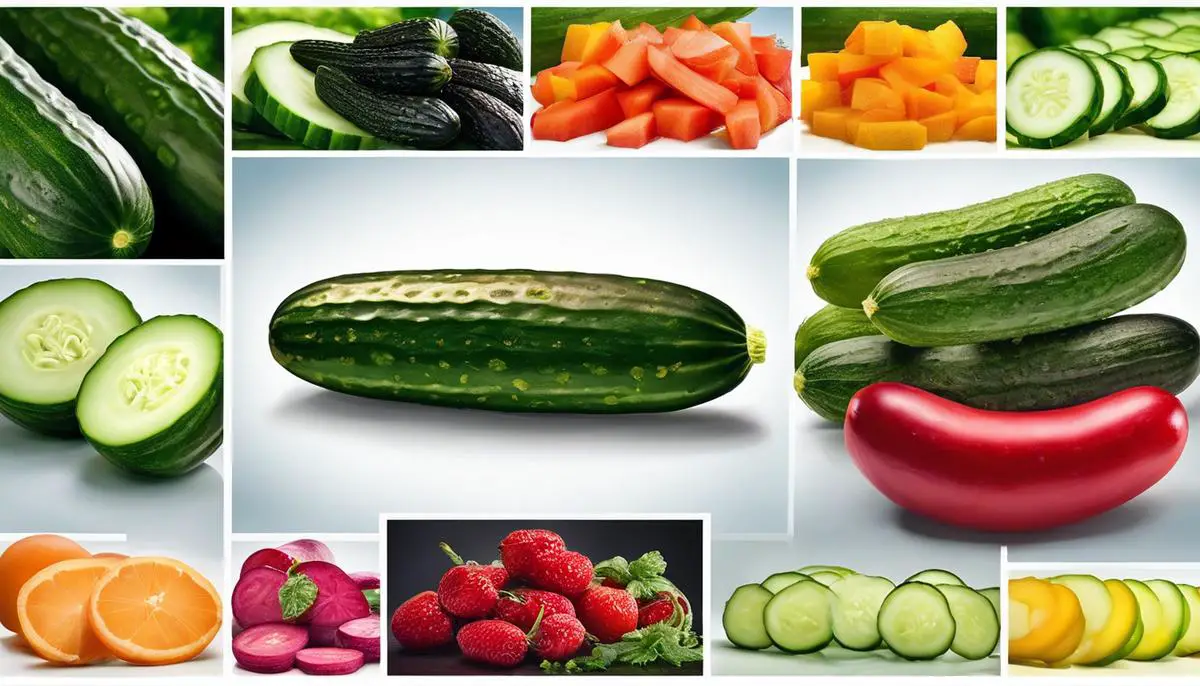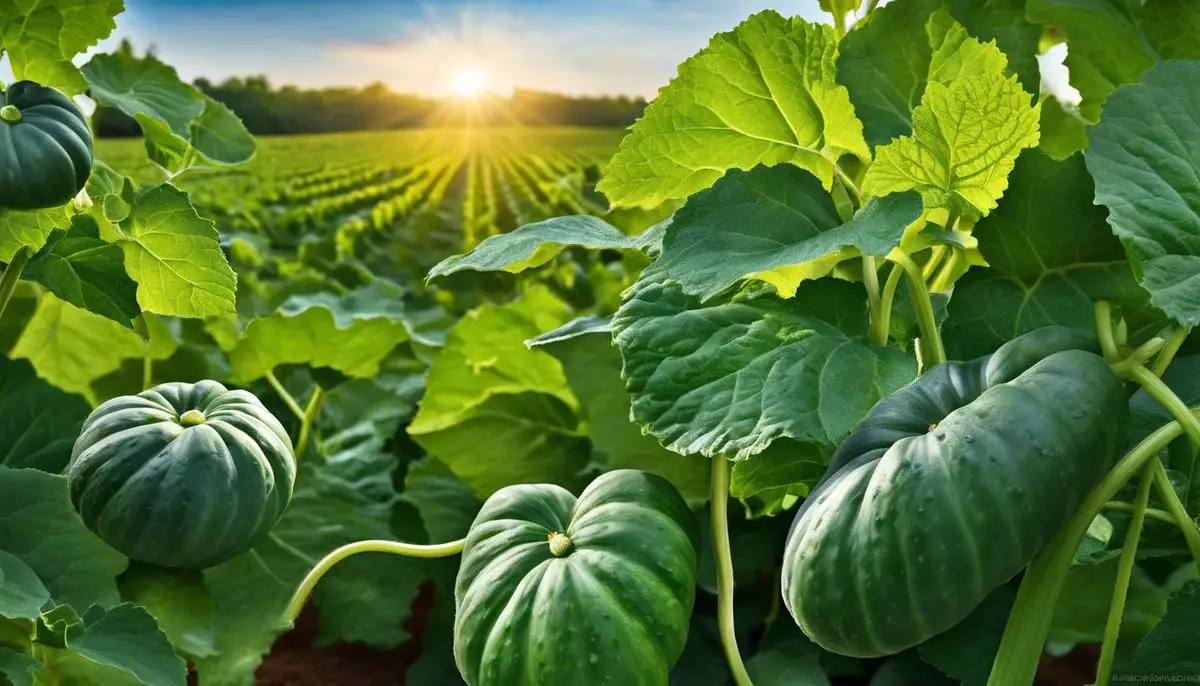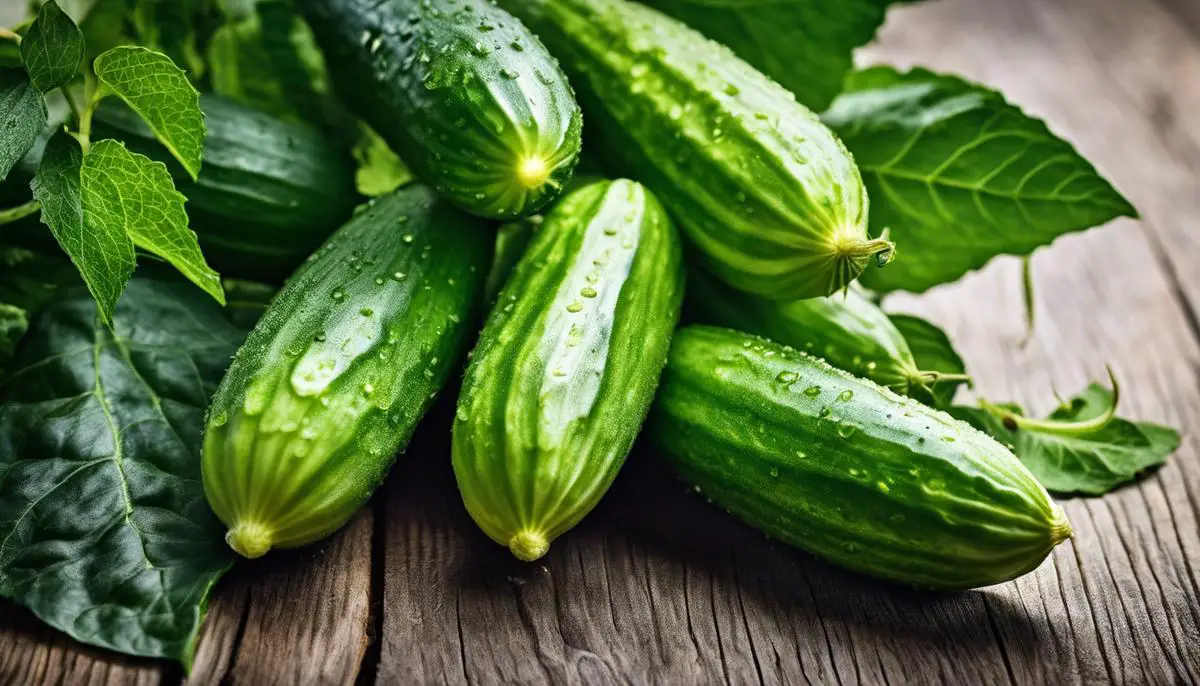Gardening enthusiasts know that growing their own vegetables is not only a rewarding activity but also a delightful journey into the world of fresh produce. When it comes to cultivating cucumbers, each phase from seed selection to harvest is crucial in yielding a bountiful and flavorful crop. If you’re eyeing those crisp, refreshing fruits—yes, cucumbers are technically a fruit!—then diving into the secrets behind their cultivation is your first step. This guide illuminates various facets of cucumber growth, from recognizing and selecting the right variety that aligns with your culinary desires and geographic location to ensuring your cucurbits have the best possible soil and nutrition they desperately crave.
Choosing the Right Variety
Picking the Perfect Cucumber Variety for Your Garden Oasis
As gardeners, we all dream of growing the crispest, most refreshing cucumbers. But before visions of cucumber sandwiches and summer salads start to dance in our heads, here’s the lowdown on which cucumber variety will thrive in your particular slice of paradise!
Reader Poll: What online courses would interest you?
First thing’s first: cucumbers fall into two main categories – slicing and pickling. Slicing cucumbers are the long, straight beauties perfect for fresh consumption, while pickling cucumbers are shorter, hardier, and, as the name suggests, ideal for pickling.
Now, for the climate considerations – cucumbers love warmth but have their own Goldilocks zone. Here’s a brief guide:
- Cool Climates (Northern Zones): Seek out varieties that boast a shorter growing season. ‘Marketmore 76’ is a champion; it’s disease-resistant and matures in about 60 days. An early bird like ‘Cool Breeze’ is also a sterling choice, setting fruit at lower temperatures.
- Warm to Hot Climates (Southern Regions): Go for heat-tolerant varieties. ‘Armenian’ cucumbers or the sturdy ‘Ashley’ variety can withstand that scorching summer sun. And if you’re dealing with humidity, ‘Sweeter Yet’ is a hybrid that won’t balk at the sticky air.
- Varied Climates with Pockets of Surprise (Midwestern to Eastern Zones): Flexibility is key here. Look for a balance with varieties like ‘Straight Eight’ or ‘Divine’, as they are renowned for their adaptability and resistance to common cucumber diseases.
Moving beyond climate, if your space is limited or you’re an urban green thumb, consider bush varieties such as ‘Bush Champion’ or ‘Salad Bush’. These compact plants are perfect for containers and small garden spaces.
Subscribe to our newsletter!
Now let’s talk soil – cucumbers aren’t picky but they do favor a well-draining soil with a neutral pH. They are heavy drinkers, so consistent watering is key to avoiding bitter fruit. Speaking of which, if you’re in it for sweetness, varieties like ‘Sweet Success’ or ‘Green Finger’ won’t disappoint with their mild, delectable flavors.
What about growth preferences? Trellised cucumbers like ‘Tendergreen Burpless’ take up vertical space, offering clean, straight fruit. Ground-crawlers, on the other hand, spread out and can take up a considerable area of your garden.
Finally, for those who love a good heirloom variety, ‘Boston Pickling’ and ‘Lemon’ cucumbers bring a touch of nostalgia and a punch of flavor that’s been appreciated by generations of gardeners.
So, fellow enthusiasts, tuning into your climate and space, and aligning with your gastronomic dreams, is sure to guide you to the cucumber variety that will not just survive but thrive in your garden. Happy planting, and here’s to a bountiful, cucumber-filled harvest!

Soil Preparation and Fertilization
Cultivating the Perfect Bed for Cucumber Victory
Greeting, fellow gardeners! If you’ve caressed the glossy exterior of a home-grown cucumber or relished the crunch of your very own pickles, you understand the sheer joy these vine veggies bring. While you may be well-versed in their varieties, climate needs, and growth habits, let’s delve into the critical step of soil preparation. Without further ado, here’s a streamlined guide to creating a lush cradle for your cukes to thrive.
The Foundation is Key: Preparing the Soil
Achieving the perfect soil condition isn’t alchemy; it’s about understanding cucumber needs and turning that understanding into action. Prepare to roll up your sleeves and get a little dirty; the reward is in the bounty.
-
Testing, Not Guessing
The ideal soil pH for cucumbers ranges from 6.0 to 6.8. Before you draw up battle plans, conduct a soil test. Simple testing kits are your friends here. They provide clarity on your soil’s starting point, let you amend effectively, and prevent the heartbreak of unbalanced conditions.
-
Organic Matter — The Secret Ingredient
Cucumber roots adore loose, well-draining, yet moisture-retentive soil. The natural solution? Organic matter. Well-rotted compost or aged manure works wonders for texture and fertility. Aim for a mix that’s rich but not overly nitrogenous — too much and you’ll get more leaves than fruit.
-
The Art of Amending
If the soil test reveals a pH imbalance, lime or sulfur can adjust it up or down, respectively. However, these amendments work slowly, so apply them well in advance of planting. Slow release is the name of the game to avoid shocking those tender roots.
-
Tilling the Land
Aerating the soil is critical. Break it up to a depth of at least 8-10 inches; this is no time for shallow work. Tilling helps integrate your organic amendments and ensures the roots will have an easy time growing.
-
Fertilizing Wisely
Cucumbers will tell you if they’re famished, but the goal is to feed them before they get hangry. A balanced fertilizer, preferably one tailored to vegetable growth, can be mixed into the soil prior to planting. Remember, though, moderation is vital — you’re nurturing, not smothering.
-
Moisture Management
While cucumbers are thirsty plants, they detest soggy feet. Thus, if your garden is prone to pooling water, consider raising your beds. A few extra inches of elevation ensures good drainage, preventing rot and disease.
-
Mulch — The Trusty Sidekick
Once your plants are in the ground, don’t forget a layer of mulch. It conserves moisture, regulates temperature, and keeps weeds at bay. Straw, shredded leaves, or even a layer of untreated grass clippings can serve this purpose.
Passion and preparation create more than a garden; they manifest a green sanctuary where cucumbers not only grow but flourish. With the soil tended lovingly, those curling vines are destined for greatness. The soil is now ready; the stage is set — let the cucumbers take it from here!

Proper Watering and Sunlight
Diving deeper into the nuanced world of cucumber cultivation, one must understand the symbiotic relationship between watering practices and sunlight exposure. This balancing act is crucial for yielding a bumper crop of crisp, refreshing cucumbers.
Water is the lifeblood of cucumbers. It must be delivered with a strategy that mimics the natural hydration cucumbers would receive in their ideal environment. Uniformity is key; cucumbers thrive on even, consistent moisture levels. They’re prone to stress if subjected to the feast-or-famine extremes of watering. Aim for 1 to 2 inches of water per week, accounting for rainfall. The best way to check? Feel the soil about 3-4 inches down; if it’s dry, it’s time to water.
Direct watering at the roots is the method of choice for cucumbers to prevent the leaves from becoming too wet, which can encourage mildew and other diseases. Drip irrigation or soaker hoses are top-notch tools for this task. The early morning is an optimal time for watering; this gives the plants a much-needed drink to combat the heat of the day and time for the leaves to dry out, reducing disease risks.
As for sunlight exposure, cucumbers are sun worshippers. Full sun is their happy place. Ensure to provide at least 6-8 hours of direct sunlight daily to promote strong, healthy growth. Remember, though, that in particularly sweltering climates, some shade during the peak heat can prevent scorching. An occasional light cloud overhead or a strategically placed shade cloth can provide a respite for your verdant charges.
Balancing sunlight and water isn’t just a matter of quantity but also of timing. On days with intense sun, an extra check on your cucumbers’ soil moisture might be warranted. Conversely, on cloudy or cooler days, less water may be necessary as evaporation rates will be lower.
Another tip in the gardener’s arsenal is mulch. A 2-to-3-inch layer of organic mulch, such as straw or shredded leaves, offers a triple threat: conserving moisture, keeping the roots cool, and suppressing those pesky weeds that compete for resources. The mulch buffers the soil, creating a microclimate that aids in retaining an even soil temperature and moisture level.
Monitoring your cucumbers’ environment and reacting to it is part of the joy of gardening. Observing the response to your watering and sunlight management will become second nature over time. With these best practices, the road to succulent success is well paved – just remember, there’s no single “recipe” for perfect results. Every garden has its microclimate and peculiarities that make your gardening experience uniquely yours. Here’s to the joy of cracking the code to your cucumbers’ contentment!

Embarking on the adventure of growing cucumbers can transform your garden into a haven of lush green vines and abundant harvests. The gratification of biting into a cucumber that emanated from your own backyard, nurtured by your hands, is unrivaled. With a blend of the right varietal choice, ideal soil conditions, precise watering, and optimal sunlight exposure, your cucumbers will flourish. Remember, the vitality of these steps cannot be underestimated as they are the cornerstone to not just growing cucumbers, but nurturing them to reach their highest potential. As the season progresses and you witness the fruits of your labor, you’ll discover that the art of cucumber cultivation is as refreshing and invigorating as the vegetables themselves.

